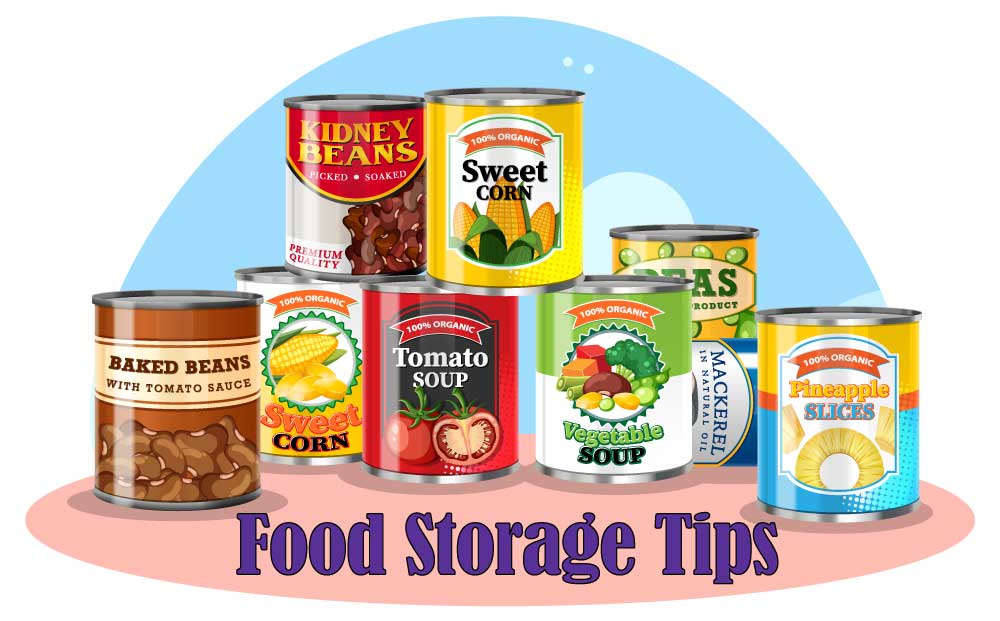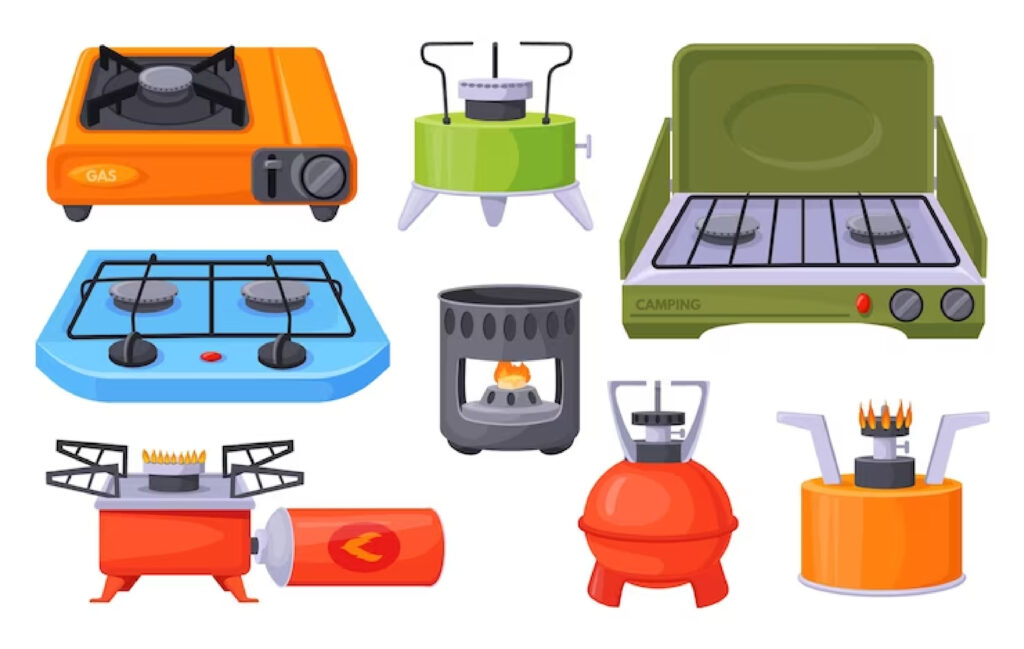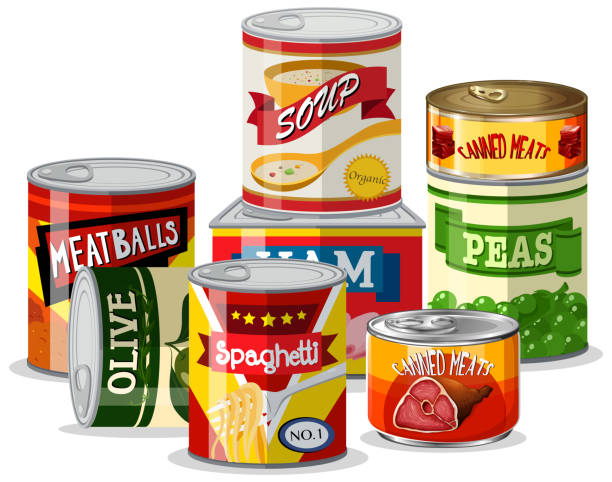Repeated Doctrine & Covenants revelations teach that being prepared is a key gospel-doctrine principle. D&C 1:12 tells Latter-day Saints to “prepare ye, prepare ye for that which is to come.” D&C 45:61 repeats the instruction: “Be prepared for the things to come.” Then D&C 88:119 and D&C 109:8 provide the same instruction: to “Organize yourselves; prepare every needful thing.” And D&C 33:30 states the oft-quoted promise that “If ye are prepared ye shall not fear.”
This blog article is prompted by a recent request for copies of an article we created several decades ago. Requests for copies of it have come to us a good number of times over the years. Its title:
A FOOD STORAGE FORAY
Duane S. Crowther – Bountiful 31st Ward Emergency Preparedness Chairman
(With Persistent Promptings and Profound Observations from Jean D. Crowther) November 1, 1999
“Two months ago in Ward Council, I blandly announced that Jean and I were going to take a month and eat only from our food storage. The quick poke in the ribs from Jean, who was sitting beside me, immediately alerted me that she viewed the project as MY affair. But the cat was out of the bag, and the Bishop immediately picked up on the comment, suggesting that the whole ward would like a full report on our findings. So here it is! . . .
“We began our project on September 6, with the pledge we would purchase what we thought we would eat in a month, and then not return to the grocery store until after General Conference. We kept our receipts and tracked our expenses, item by item. Since there are only the two of us at home now, and since we now find ourselves among that awe-inspiring group known as ‘senior citizens,’ we feel our results might be similar to what young couples might experience.
“We actually had several objectives for the month-long quest. They were:
- (1) to identify potential foods for a one-month food supply;
- (2) to discover what would be involved in cooking without electricity for an extended period;
- (3) to determine a realistic daily usage and storage level for water and other essential items;
- (4) to recognize what physical effects we would experience from eating only our storage-type foods without eating fresh foods;
- (5) to perform some taste and cost comparisons on various types of foods such as powdered milk, MRES (Meals Ready to Eat), and other foods; and
- (6) to prepare a realistic computer spreadsheet for tracking food storage preferences, costs, and quantities;
- (7) to inventory the quantities and examine the condition of our long-term food-storage supplies; and
- (8) to begin using our long-term storage items on an on-going basis.
“Dealing with those eight objectives turned the month-long project into an interesting and meaningful experience for us.”
Cited below are extracts from that report. This blog is the first of two parts. Our next blog will provide additional home-storage insights and a copy of the detailed spreadsheet we created.
HOW TO SET UP A FOOD STORAGE PLAN

1. Identifying Potential Food-storage Products
In addition to using our wheat and other long-term storage foods we had on hand, we looked for a combination of other foods, primarily canned goods, that could provide us a balanced diet with good nutrition. We wanted products that could be stored for a reasonable (several-year) period and easily included in our normal shopping and food rotation.
We classified our purchases into the following categories: (1) vegetables and sprouts, (2) fruits, (3) meats, (4) main dishes, (5) pastas and soups, (6) breads and grains, (7) cereals, (8) milk, (9) juices and drinks, (10) desserts and sweets, (11) soaps and cleaning products, and (12) paper products. Part of our effort was to locate suitable canned meats and proteins, since Jean is sensitive to soy-protein substitutes. Also, we knew we needed fruits and vegetable items to take the place of fresh produce.
2. Cooking without Electricity

Anticipating that an emergency for an extended period of time could bring a prolonged power and/or gas outage, one of our goals was to determine what was involved in preparing three meals a day without using our kitchen’s stove, oven, microwave, small appliances, or dishwasher.
We used a two-burner Coleman propane stove, which we set up on a card table inside our garage, just outside the kitchen door. The stove was fueled by Coleman 16.4-oz cans of propane. We carefully timed the usage of the stove, also monitoring whether we were using one or two burners. We discovered that operating the burners on a low setting still heated our pans faster and better than our kitchen’s electric stove does; and that there was no inconvenience at all to cooking on the Coleman stove except that we had to be in the garage with the door or window open to prevent poisoning from carbon monoxide fumes. It was still shirt-sleeve weather during our experiment. In the winter this situation could be unpleasant, though certainly still workable.
We found that a Colman can of propane fuel lasted for an equivalent of 8.42 hours of single-burner usage and lasted us for nine days. We used a single burner for 6.28 hours of single-burner usage and added the second burner for 2.13 hours, for an average of just about one hour of total stove usage per day. We could warm up a can of most foods in about 7-10 minutes. Jean became very creative in using different arrangements of cooking pans. Warming dishwater (2 quarts in a 3-quart saucepan) typically took about 7 minutes.
Recognizing that nine days was long enough for us to test the process and measure pertinent data related to cooking outside without electricity, we went back to using our kitchen stove. A comparison of our electric bills for August and September indicated that our non-use of the electric kitchen appliances for those days saved us about $10.00 on our electric bill.
It would be difficult to find a better approach to emergency cooking than a Coleman camp stove. It certainly was quicker and easier than using a Dutch oven and charcoal, or our outdoor propane grill, or cooking on an indoor wood stove, although using any of those methods would add variety.
Many of us have stored items such as dry beans, split peas, and rice, which require several hours of cooking time. Taking into consideration our time involvement and limited fuel, we’ve added Minute Rice and canned beans to our long-term storage program.
3. Daily Usage of Water and Other Essential Items

A number of emergency preparedness books suggest storing a gallon of water per person per day for a two-week emergency. We tried existing on that amount for a week and quickly realized how small an amount a gallon is. We felt it is essential that we drink the recommended eight 8-oz. glasses of water per person per day. That’s 64 oz. or a half gallon.
We used paper plates and cups for our experiment and served out of the cooking pans, but we found that washing dishes (once a day) consumed at least a gallon (2 quarts of dish water and 2 quarts of rinse water).
We found that getting rid of soap requires a tremendous amount of water, so we cut our dishwashing soap usage to ¼ teaspoon per session, which still gave us adequate suds but reduced the rinsing requirements. We recommend that you add dishwashing soap to your emergency preparations list.

4. The Physical Effects of Only Eating Storage Foods

Our normal diet relies heavily on fresh vegetables and fruits, but wanting to be realistic about the scenario, we cleaned produce out our refrigerator. It took only a few days before both of us were very hungry for crunchy things like a green salad or some carrot sticks.
We ate lots of canned or dehydrated vegetables and fruits, and drank several kinds of fruit juices, but the texture and eating satisfaction was just not there! We decided to eat our few home-grown peaches and tomatoes that ripened during the month, but it was very good to buy fresh produce again at the end of the month-long experiment!
Another major problem: cooking only on a Coleman stove didn’t allow us to make bread, which we really missed. I lost about six pounds (a whole notch on my belt!), probably because without bread to enjoy I ate fewer carbohydrates and calories than normal. Jean’s weight stayed about the same.
On the other hand, we found that prepared canned foods are not low in fat. Since we used them for our protein, we probably ate a higher percentage of fat than in our normal diets.
We knew that we’d become hungry for desserts and sweets so we purposely bought instant puddings (shaken up by hand reasonably well in a plastic Tupperware shaker), and we rationed out a package of small Snickers-type candy bars. They really hit the spot when we were hungry for sweets. We’ve decided to store (and enjoy rotating) a good assortment of tiny candy bars that are available in stores for Halloween trick-or-treaters. Stored chocolate chips keep well. A friend keeps her M&Ms in clean dry bottles for extended periods, and hard candies have a long shelf life. But with all this, we still had to resist an occasional “Big-Mac” and “let’s eat out” attack during the month.
5. Other After-the-experiment Results
It didn’t take long to recognize that we couldn’t immediately change to extensive use of our long-term supplies. After the month-long experiment was over, we began using more of the long-term food supplies we had on our shelves. Just a breakfast or two of cracked wheat that we ground in our newly-acquired hand grinder made it apparent that our digestive systems needed to adjust over a period of time. We resolved to use more of our grains and other long-term storage items in our daily meals.
We learned to sprout, acquired a few inexpensive sprouting trays, and planned to utilize more sprouts in our menus.
Our hunger for fresh foods made us consider the implications of emergency maintenance of our freezer and frozen-food supplies, so we invested in a small generator and even explored solar and wind-power solutions.
6. Labeling purchased cans of food-storage goods
One of the things we have done, during the years, is to write on every can the month and year we acquired it. (Example: 3/18 told us we’d purchased the product in March of 2018. We definitely stress the importance of this practice. Do it!) Identifying acquisition dates is an important step in managing the usage and rotation of food-storage items.
A major personal goal during the one-month experiment was to evaluate the quantity and quality of our long-term food-storage items. Using those acquisition dates as a guide, we inventoried our long-term food storage supplies.
More than 25 years previous to the experiment, we had bought wheat, beans, and various other products for our “basic emergency supply”. We had consistently stored, rotated, and used canned goods and other items during the intervening years.
As a result of the experiment, we opened many of the #10 cans and, unfortunately, found some of them to be completely inedible. We threw many of them away and replaced them with new products.

In the process, we had a discussion with the Davis County Extension agent about our wheat. She said that while wheat stores for a long time, after 12 or 13 years it typically acquires an off-taste and ceases to be a very good food source. She suggested that we try to bake bread using it and evaluate it. If the bread is OK, the wheat is still good.
Jean made two batches of bread: one with five-year-old wheat and the other with the 25-year-old wheat. The five-year-old-wheat bread was fine. The older wheat made good-looking bread but there definitely was an off-taste that caused us to discard all our older wheat supply. The verdict: test the older stored products. Unless they yield really good-tasting results, it’s time (and safer) to throw the old stuff away and update with new supplies. Expensive, yes. Essential: definitely less! Do it!
In our next blog, we’ll share the format for our detailed program for managing a meaningful food-storage program.
